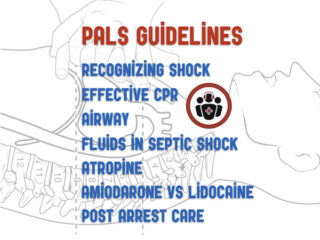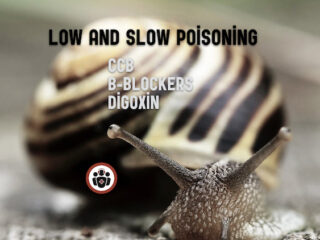
Episode 93 – PALS Guidelines
I remember when I started practicing emergency medicine a decade and a half ago it seemed that any kid who came to our ED in cardiac arrest died. I know, depressing thought. But, over the past 15 years, survival to discharge from pediatric cardiac arrest has markedly improved, at least for in-hospital arrests. This is probably mostly due to an emphasis on high-quality CPR and advances in post-resuscitation care; nonetheless the more comfortable, knowledgeable and prepared we are for the always scary critically ill pediatric patient, the more likely we will be able to resuscitate them successfully - which is always a huge save.
Episode 92 – Aortic Dissection Live from The EM Cases Course
While missing aortic dissection was considered "the standard" in the late 20th century, our understanding of the clinical diagnoses has improved considerably since the landmark International Registry of Aortic Dissection (IRAD) study in 2000. Nonetheless, aortic dissection remains difficult to diagnosis with 1 in 6 being missed at the initial ED visit. With the help of Dr. David Carr we’ll discuss how to pick up atypical presentations of aortic dissection without over-imaging as well as manage them like pros by reviewing: 1. The 5 Pain Pearls, 2. The concepts of CP +1 and 1+ CP, 3. Physical exam pearls, 4. CXR pearls and blood test pitfalls, and 5. The importance of the correct order and aggressive use of IV medications. So with these objectives in mind…
Episode 91 Occult Knee Injuries Pearls and Pitfalls
There are a whole slew of very important occult knee injuries - those that have a normal or near normal x-ray – that can cause serious morbidity if you miss them, and for the catchall soft tissue injuries there are some subtleties in diagnosis and management that will make a real difference to our patients. Arun Sayal and Hossein Mehdian answer questions such as: When should we suspect a spontaneously reduced knee dislocation? Do all patients suspected of a spontaneous knee dislocation require a CT angiogram to rule out vascular injury? Which patients with a low energy mechanism are at risk for knee dislocation and vascular complications? How can you increase the accuracy of the active straight leg raise in assessing for quadriceps and patella tendon rupture? What is an easy way to identify patella baja and patella alta on a knee x-ray? What are the indications for ultrasound of the knee? What are the true indications for a knee immobilizer and how can knee immobilizers kill our patients? and many more...
Episode 90 – Low and Slow Poisoning
One of the things we need to think about whenever we see a patient who’s going low and slow with hypotension and bradycardia is an overdose. B-blockers, calcium channel blockers (CCB) and digoxin are some of the most frequently prescribed cardiovascular drugs. And inevitably we’re gonna be faced with both intentional and unintentional overdoses from these drugs in the ED. If we can recognize these overdoses early and manage them appropriately, well - we’ll save some lives...
Episode 89 – DOACs Part 2: Bleeding and Reversal Agents
In this Part 2, DOACs Bleeding and Reversal we discuss the management of bleeding in patients taking DOACs with minor risk bleeds, like epistaxis where local control is easy to access, moderate risk bleeds, like stable GI bleeds and high risk bleeds, like intracranial hemorrhage. We answer questions such as: How do we weigh the risks and benefits of stopping the DOAC? When is reversal of the DOAC is advised? How best do we accomplish the reversal of DOACs? Is there any good evidence for the newest reversal agent? When should we stop DOACs for different procedures, and when should we delay the procedure?
Episode 88 – DOACs Part 1: Use and Misuse
As we get better at picking up thromboembolic disease, and the indications for Direct Oral Anticoagulants (DOACs) widen, we're faced with increasingly complex decisions about when to start these medications, how to start them, when to stop them and how to manage bleeding associated with them. There’s a lot that we need to know about these drugs to minimize the risk of thromboembolism in our patients while at the same time minimizing their risk of bleeding...







